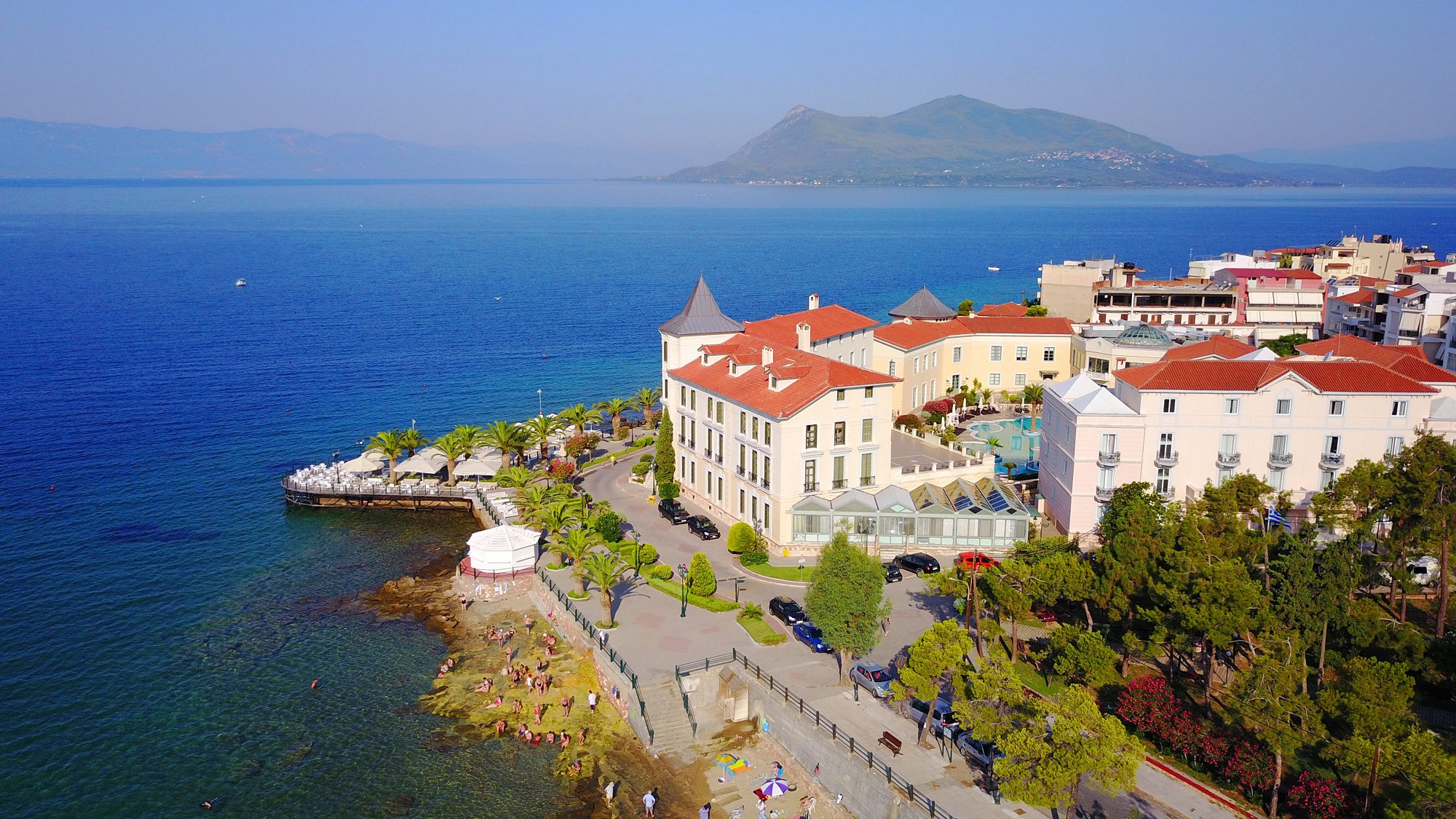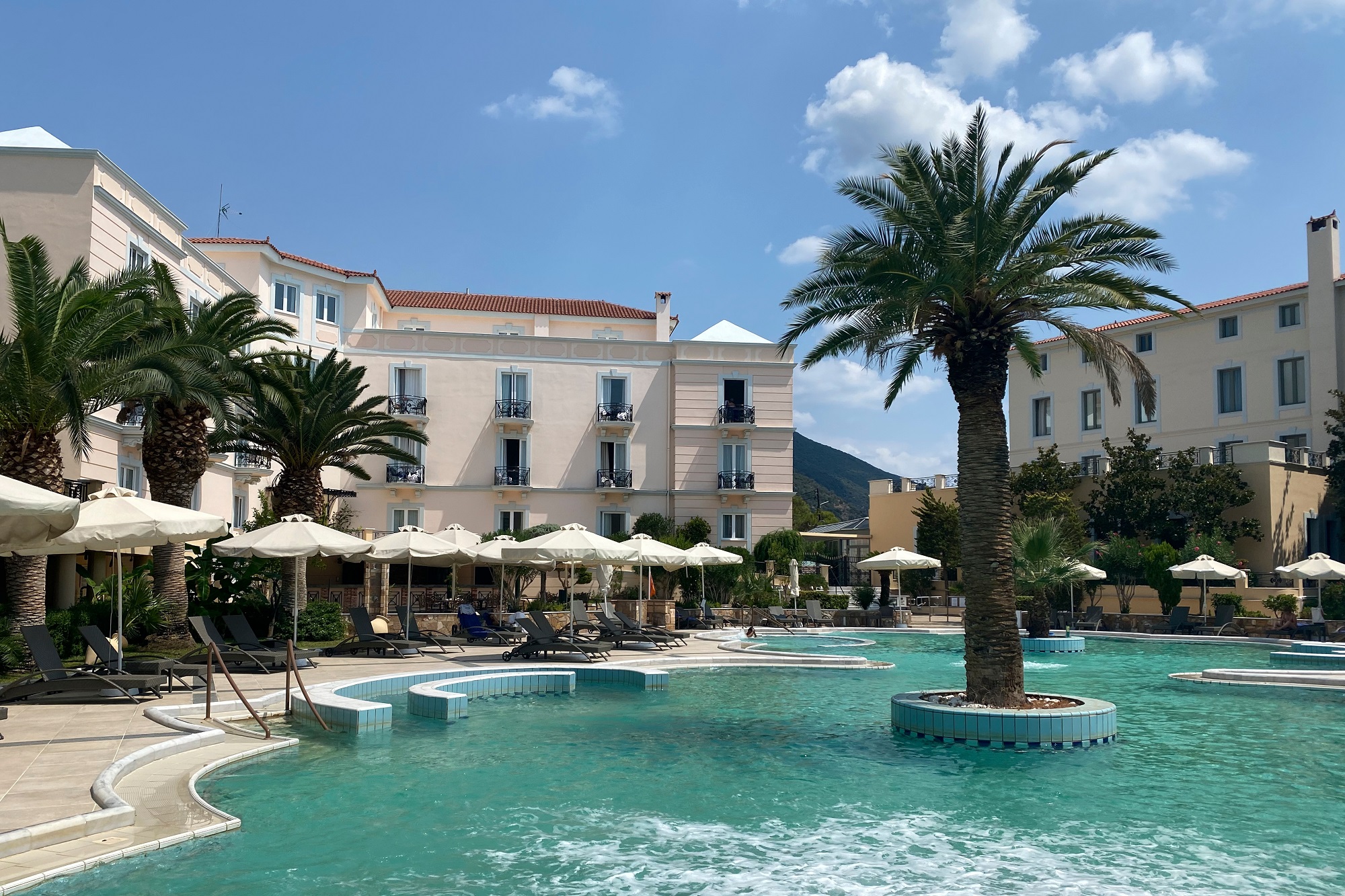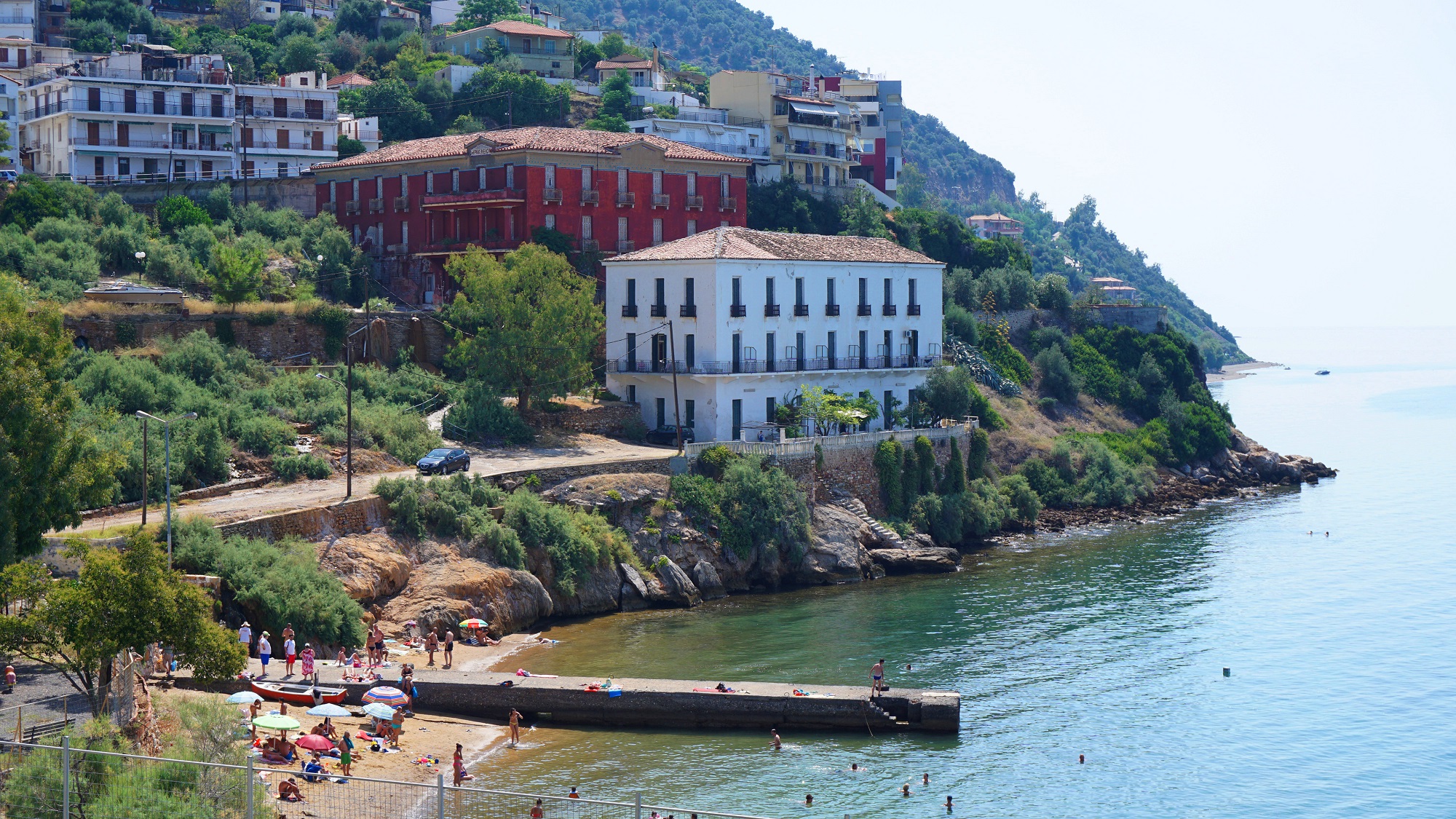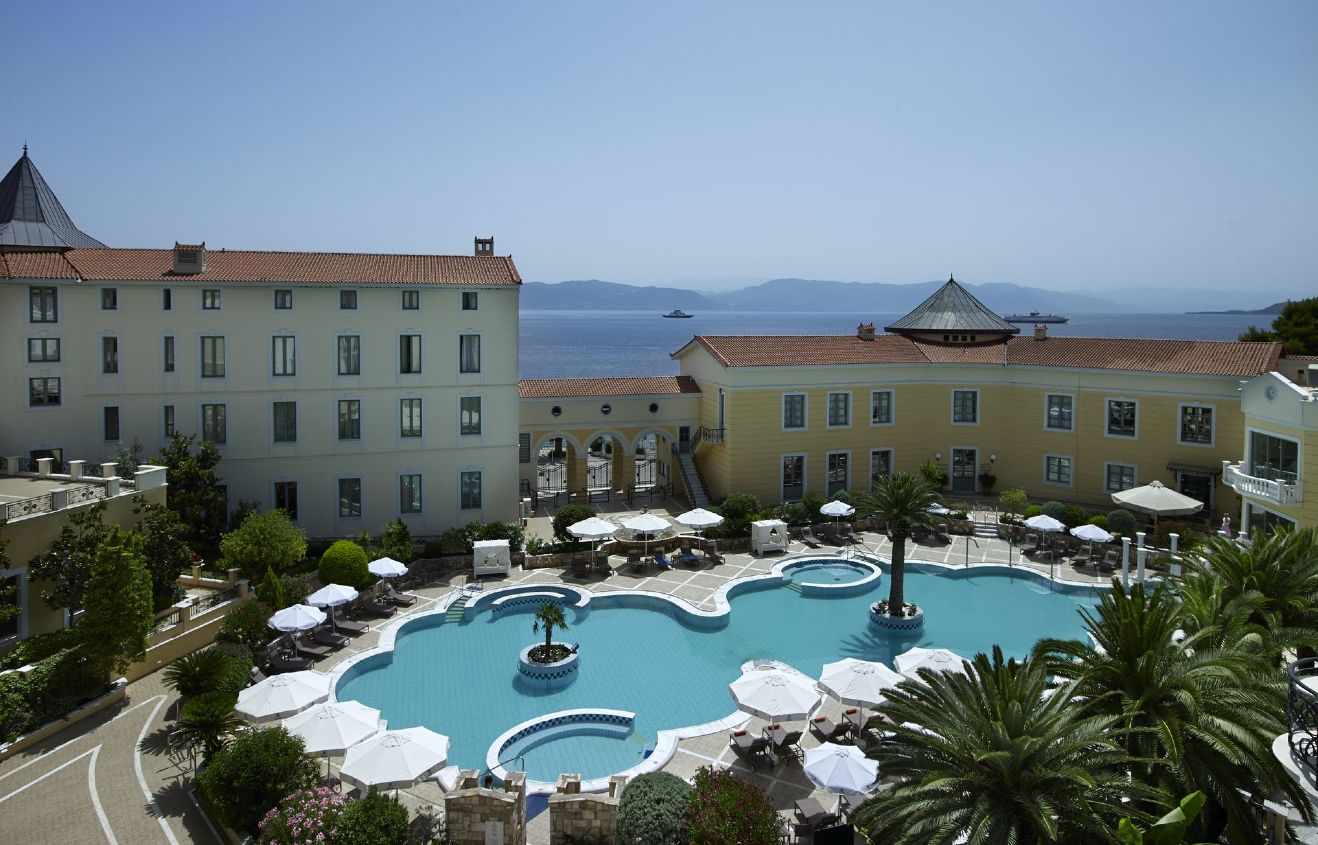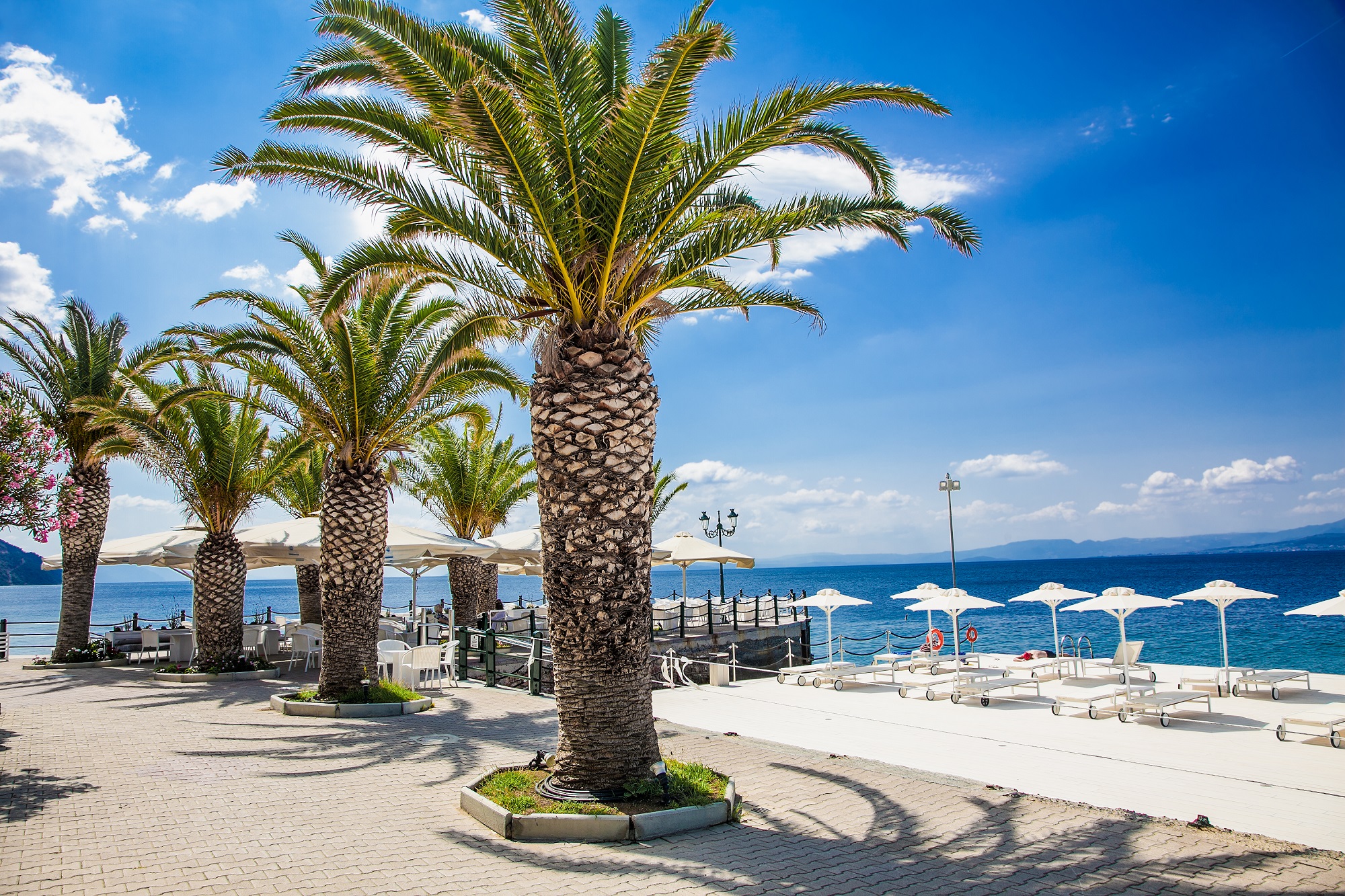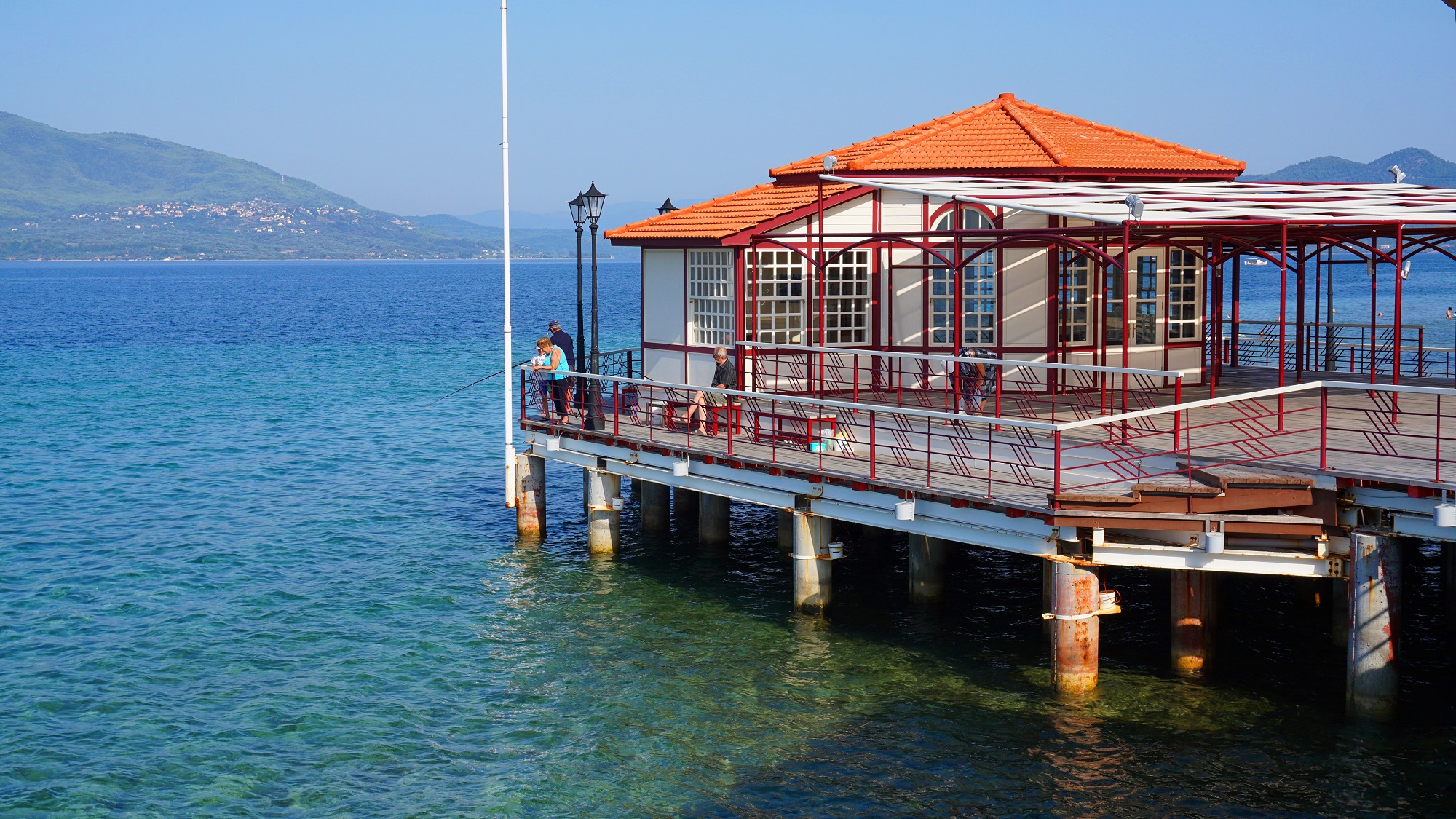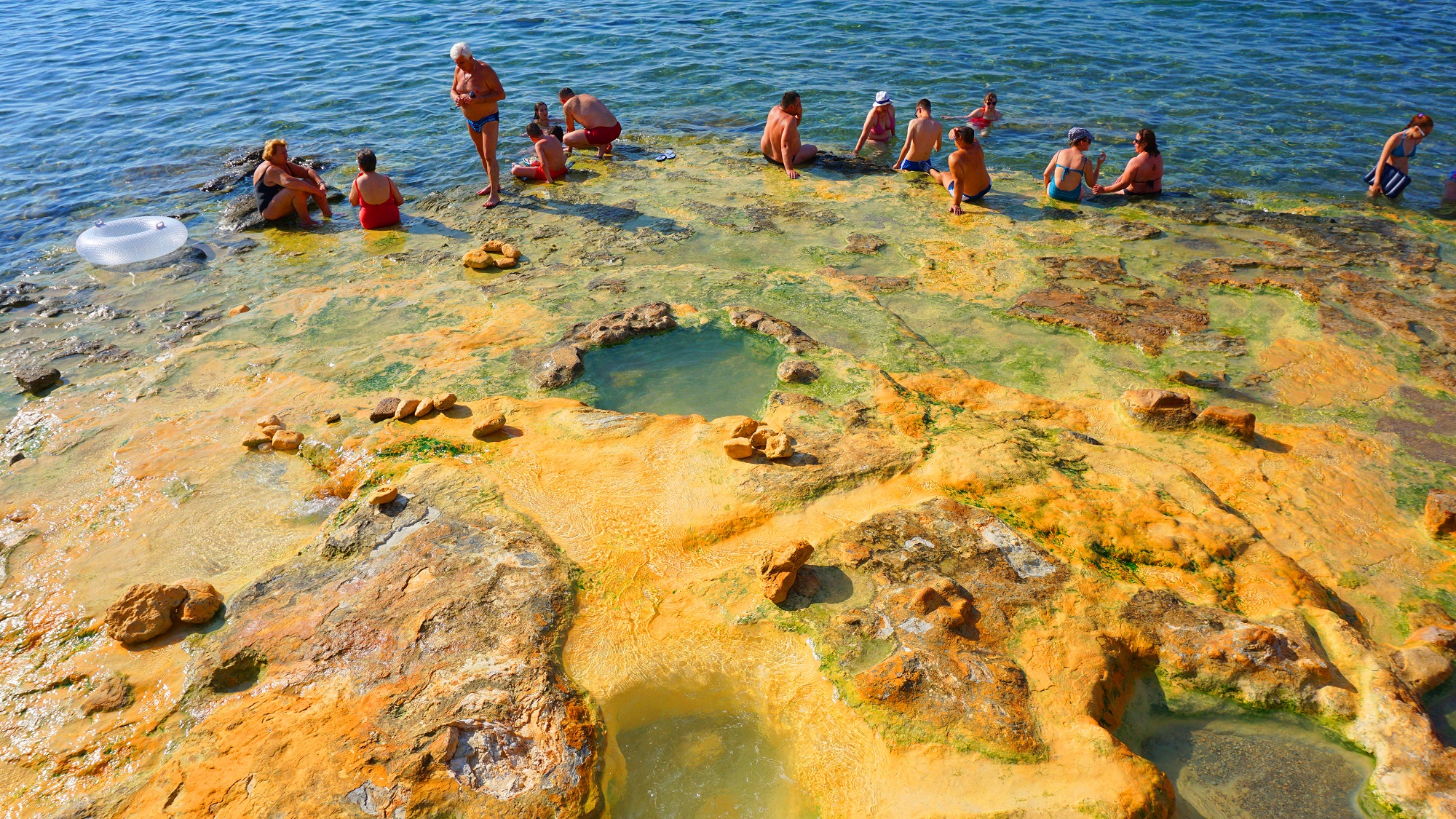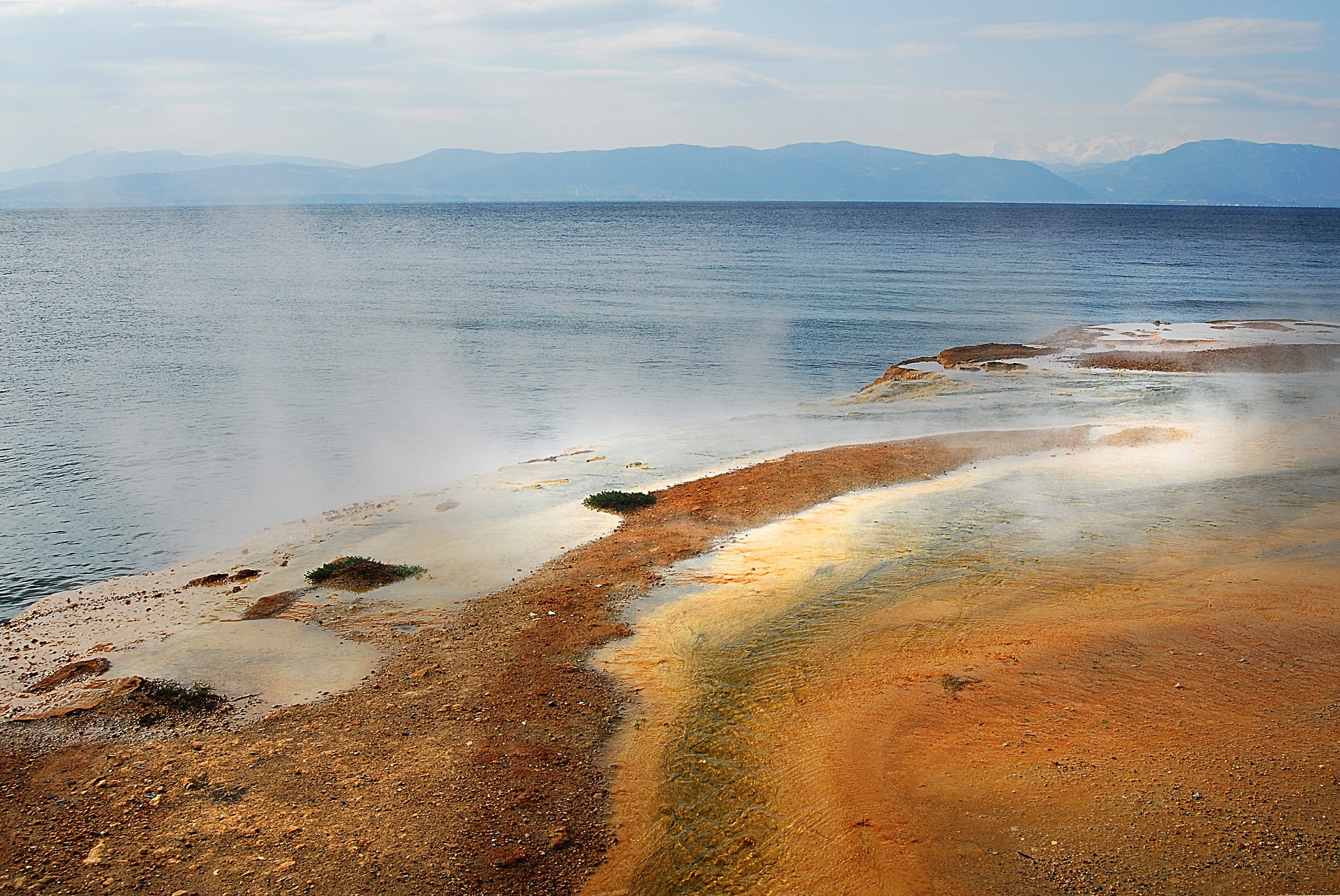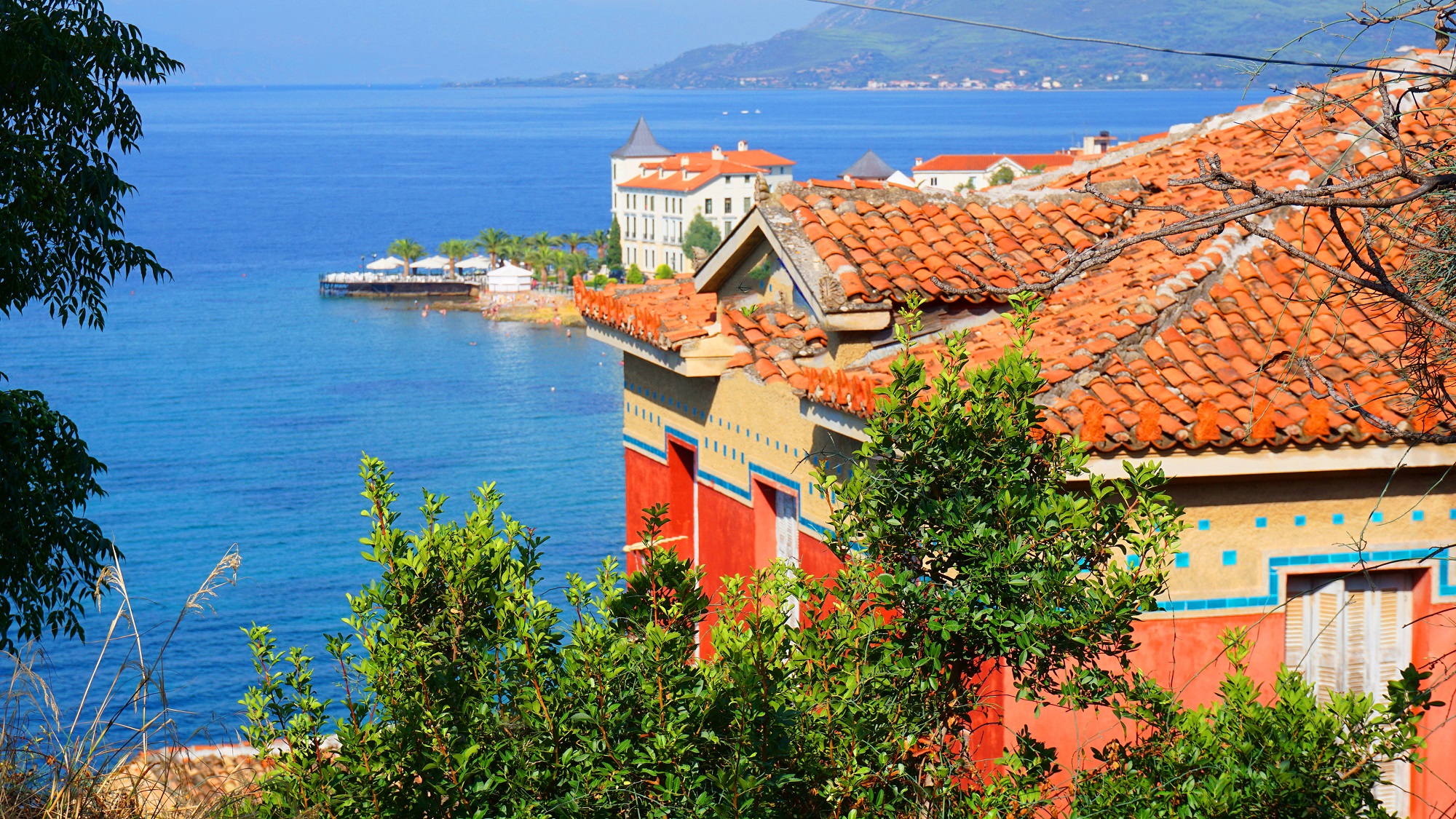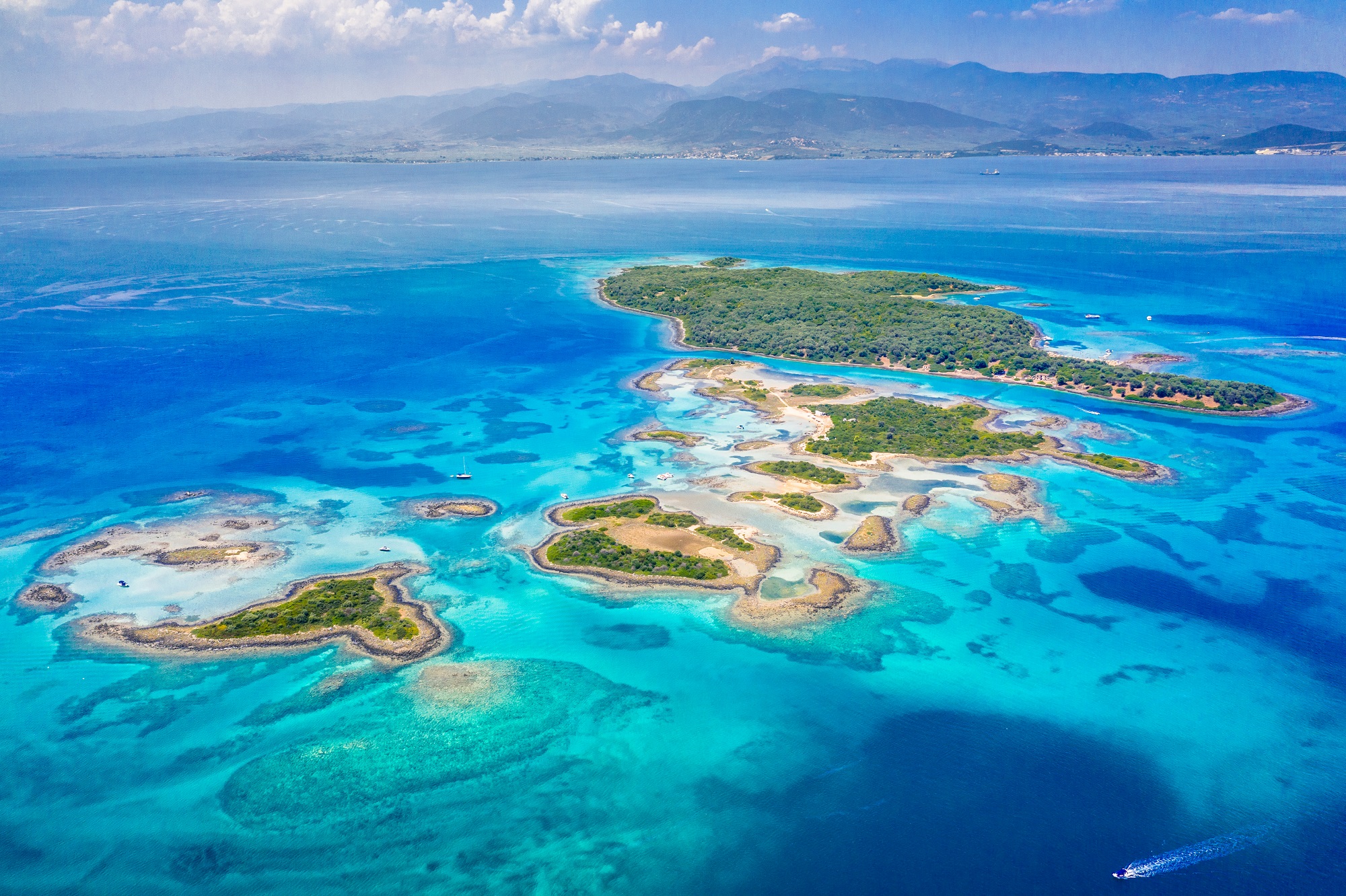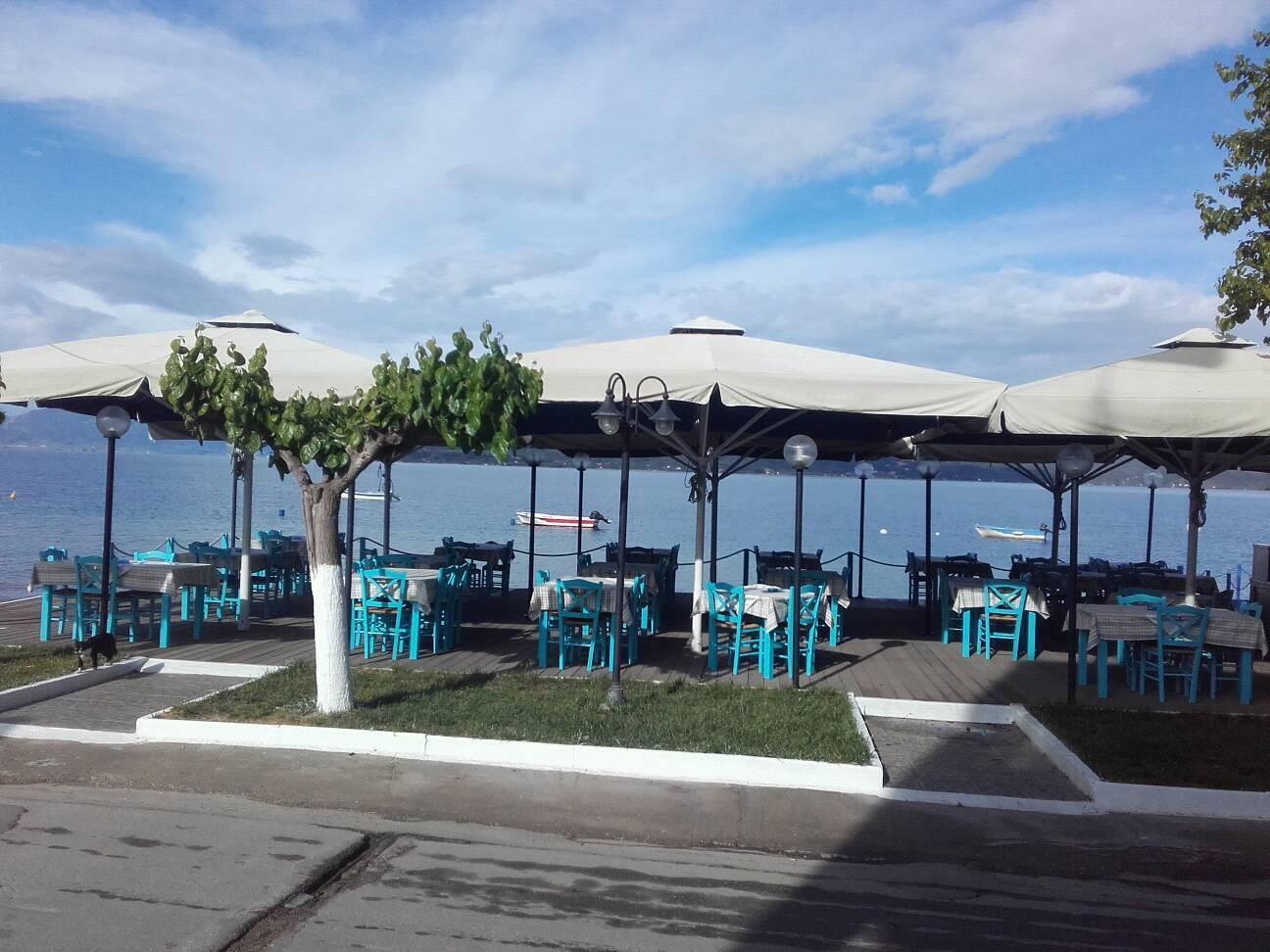The thermal springs have been a popular destination, for over 2,000 years, with records of visitors ranging from Roman and Byzantine emperors – Hadrianus, Septimius Severus and Constantine the Great – to more contemporary international high society and celebrities like Aristotle Onassis, Winston Churchill, Maria Callas and Omar Sharif. Modern day visitors who arrive for holidays and water therapy, see the same sight that everyone before them did: a soil that appears to be boiling, due to the thermal springs everywhere; in the sea, under red sulphurous rocks, in the small basins formed in the water, as well as in pools (both private and public) bathtubs and jacuzzi.
You can smell the underground waters, while the therapeutic, rejuvenating, water is there for everyone. Even if you have no need for balneoerapy, swimming in a sea where cold and boiling water is only metres apart, that has steam coming off the surface of the bright blue water is too fun to miss.
Aidipsos is making a comeback as a modern spa destination, not just for the treatment of rheumatism. The relaxing, rejuvenating experience, and the spa therapies offered by the hotels (some of them quite luxurious) are becoming increasingly popular with a large audience of younger people. The public beach is sandy and offers a lot of space for you to lay your towel, since there are only a few umbrellas on it. 4 km away, there’s the also sandy beach of Agios Nikolaos, where you can also have ouzo and mezze.
In addition, the summer season in Aidipsos this year starts with a great opening: on Wednesday, June 15, the historic open-air cinema ‘Apollo’ reopens after decades of being closed, an event celebrated by both locals and visitors, even more so since it’s part of the Evia Film Project, an initiative of the Thessaloniki International Film Festival in an effort to help northern Evia, after the terrible wildfires last year. The programme includes interesting films, as well as the Edipsos International Folk Dance Festival where choirs and dance troupes from Greece and abroad will present their work.
Architectural masterpieces
Apart from the spa and the beach, another nice feature of Aidipsos is the gorgeous, imposing buildings scattered all around the village. They create an atmosphere reminiscent of the Interwar years, and you can almost see the wealthy, carefree bon viveurs enjoying a bath, flirting, and strolling around in elegant clothes. The most impressive building among them is undoubtedly the lovely ‘Thermai Sylla Spa’ hotel in front of the beach (it was built in 1896) and it caused the renaissance of the oldest bath town in Greece. It’s a true architectural masterpiece, that was fully renovated in 2000.
In general, the buildings that were built in the late 19th century or during the first three decades of the 20th century, have a central European air. The building that used to house the old post office, for example, with its towers, makes you think of Ziller (or von Gärtner or Hansen). The luxury, the size and the decoration show the thriving economy of Aidipsos in the past.
Some buildings built in the early 1900s, designed by great Greek architects are hotel ‘Aigli’ (Augoustinos Biris), ‘Vila Pneumatikou’ (Konstantinos Katsikis) and ‘Iraklion’ on the hill (Vasilios Kouremenos), in the distinctive red colour where the hydrotherapy centre used to be housed.
There’s another impressive building next to it, the white ‘Hotel Stadion’, while a bit further away, there’s ‘Hotel Istiea’, and, at the entrance of town, the abandoned ‘Hotel Kastalia’. The neoclassical building that used to be the town hall is also very beautiful. These architectural gems stand next to many small shops in the various neighbourhoods of Aidipsos, filled with doylies and 1960 and 1970 rotunda tables, that might inspire you to go on a retro shopping spree.
The romantic seaside promenade
Whether you spend the day at the thermal springs, or on a short excursion nearby, your day will end at the lovely seaside promenade with the palm trees, that captures the essence of life in Aidipsos. There, you’ll see well-dressed old ladies and gentlemen, strolling before dinner, next to younger people, returning from the beach in shorts and flip flops or in modern clothes, often with little children with them and prams with babies.
The light sea breeze will make the holiday atmosphere even more chill. In the distance, you can see Arkitsa, Agios Konstantinos, Kamena Vourla and even Parnassus. Continuing your stroll, you’ll come across modern cafés, while the picturesque “Kima” will charm you, when you reach ‘Hotel Istiea’.
It’s an elaborate octagonal hall, with beautiful windows, built on a wooden platform in the sea. There are white awnings to provide shade and you can enjoy your coffee, feeling like you’re on a boat. ‘Kima’ has been a town-trademark since 1933, when it was built, and it has been a hospitality and entertainment space ever since.
The setting in Aidipsos is ideal for a stylish photoshoot where you can pose in various roles.
The soil is boiling: 60 springs with the temperature reaching 71°C
Aidipsos is the largest bath town in Greece, that has been open for 2,000 years. It has 60 hot springs, some of which are therapeutic, with the temperature ranging between 34 °C and 71 °C. Their water comes from the Gulf of Evia rift at 3,000 m depth. According to mythology, Athena asked Hephaestus to bring hot, healing waters to the surface of the earth so that Hercules, her protégé, could rest and recover after each of his twelve labours.
Apart from the private spa centres at hotels, there also the Greek National Tourism Organization’s Hydrotherapy Centre (open between June 1st and October 30th, tel.: 0030 22260-23500, 0030 22260-23501 and 0030 222600-23502), that is one of the largest and most modern in the country. It includes various tubs (jacuzzi, normal, for special treatments, for limbs, Scottish showers), whirlpool bath therapy, one outdoor and two indoor pools, as well as a physical therapy centre with exercise and electrotherapy machines. It also offers mud baths and drinking spring water therapy.
The hydrotherapy centre ‘Agii Anargiri’, that was built before 1950, still stands near the homonymous chapel (also called Spilia tou Sylla –Syllas’ Cave-) and has been listed as a protected monument. According to Plutarch’s ‘Parallel Lives’, the Roman general Syllas – who had slayed many Greeks – came here to be cured from gout.
Syllas’ ‘cave’ is a small domed building that with the passage of time has been covered with various materials carried by the water, and as a result the entrance resembles the entrance of a cave. There are two large statue pedestals with inscriptions honouring the emperors Hadrianus, Septimius Severus and Constantine the Great.
What to see and where to go
In Aidipsos, the church of Kimisi tis Theotokou, dating back to 1860 (the icon of Mary was painted in 1815), and the church of Agios Nikolaos, that was built before 1800, are worth visiting. The archaeological collection, with findings dating back to the Prehistoric period, mostly from excavations at Koumbi (2km outside Aidipsos), is on display at the ground floor of the Greek National Tourism Organization’s Hydrotherapy Centre. There are also clay objects dating between the Geometric and the Roman period. The Mycenaean sword found in Kastaniotissa is particularly interesting.
Outside Aidipsos, the women’s monastery of Agios Georgios offers a multifaceted experience: it is a place of religious, historical, architectural and spiritual importance. It’s on mount Telethrio, at 400m altitude, at a beautiful location with a panoramic view. It is not known when it was built, though it was probably in the late 14th century – since then it has been destroyed and rebuilt many times. Its elaborate wooden carved altar dates back to 1834, according to the inscription over the holy doors, and is a masterpiece. Parts of the altar of the deserted church of Agii Anargiri in Ano Ilia are kept in the monastery.
The monastery’s catacomb, built in the Byzantine style, that reaches the Agios Ioannis church through a domed, underground corridor, is really impressive. Some say that the unexplored tunnels around the area used to belong to a temple dedicated to Apollo. In another catacomb, there is the small church of Evangelismos tis Theotokou, while another houses the ossuary of the monastery of Agios Georgios. The relics of Agios Georgios, Agios Mamas, Agia Marina and Agia Kiriaki are held there.
When you’re in the area you must go on a daytrip to the Lihada peninsula and the dreamy Lihadonisia islands. It’s one of the most beautiful areas in Greece, with verdant islands in turquoise waters, resembling the Seychelles. It is 15 km away and you need to cross the mountainous Gialtra and go the seaside Gialtra Baths– the outermost part of north-west Evia. There, you can take a boat that will take you on a tour of the islands before taking you to the largest, Monolia, where you can swim in the clear, shallow, warm waters, have a meal and enjoy the golden sun.
For food
The restaurants “Mesogios” and ‘Psaraki’ at the legendary hotel ‘Thermae Sylla Spa’ (tel.: 0030 22260-60100) serve inspired Greek cuisine with the signature of award-wining chef Giannis Baxevanis. The menu includes many herbs and wild greens, while there’s a strong Cretan cuisine influence, something typical of the chef who creates tasty dishes with simplicity. The food is served at the cool platform across from the hotel.
‘Le Palme Luxury Beach Club-Restaurant’ (tel.: 0030 693 843 4996) on Agios Nikolaos beach is a modern, light, and cheerful restaurant right next to the water. They serve seafood, pizzas, snacks, drinks and cocktails. They play nice music and have reasonable prices. ‘Kaliva’ tavern (tel.: 0030 22260-22735) is the place to go for a wide variety of casserole dishes, they have a lovely cool garden with a pleasant atmosphere.
Finally, ‘Maravelis’ is another nice fish place, on Agios Nikolaos beach (tel.: 0030 22260-60240) with its location being its strongest advantage. Apart from fish they also have meat dishes.
Read also:
The secret of the beach that has become an advertisement for Greece
Trekking at Steni, central Evia, features impressive forestland
Meganisi: Idyllic Ionian Sea island with sea caves, gorgeous fjords



